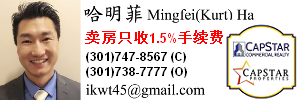Release Date 10/16/2020
U.S. Citizenship and Immigration Services (USCIS) today announced it will increase fees for premium processing, effective Oct. 19, as required by the Continuing Appropriations Act, 2021 and Other Extensions Act, Pub. L. No. 116-159, signed into law on Oct. 1. The USCIS premium processing service allows petitioners to pay an additional filing fee to expedite the adjudication of certain forms, generally within 15 days. The Act included the Emergency Stopgap USCIS Stabilization Act, which requires USCIS to establish and collect additional premium processing fees, and to use those additional funds for expanded purposes.
Pub. L. No. 116-159 increases the fee for Form I-907, Request for Premium Processing, from $1,440 to $2,500, for all filings except those from petitioners filing Form I-129, Petition for a Nonimmigrant Worker, requesting H-2B or R-1 nonimmigrant status. The premium processing fee for petitioners filing Form I-129 requesting H-2B or R-1 nonimmigrant status is increasing from $1,440 to $1,500.
Any Form I-907 postmarked on or after Oct. 19 must include the new fee amount. If USCIS receives a Form I-907 postmarked on or after Oct. 19 with the incorrect filing fee, we will reject the Form I-907 and return the filing fee. For filings sent by commercial courier (such as UPS, FedEx and DHL), the postmark date is the date reflected on the courier receipt.
Pub. L. No. 116-159 also gives USCIS the ability to expand premium processing to additional forms and benefit requests, but USCIS is not yet taking that action. Any expansion of premium processing to other forms will be implemented as provided in the legislation.Last Reviewed/Updated:10/16/2020
Source: https://www.uscis.gov/news/premium-processing-fee-increase-effective-oct-19-2020
Trump Administration, DHS Fight to Ensure American Technological Advantage and Competitiveness on Innovative Technologies
Release Date: October 16, 2020
Announce Release of the National Strategy for Critical and Emerging Technology
Washington, D.C. – The Trump Administration continues its work to ensure America’s technological and innovative edges are guaranteed by offering the first National Strategy for Critical and Emerging Technology. The plan outlines efforts to protect critical and emerging technologies across American industry, including fields such as Computing; Artificial Intelligence; Communications and Networking; Data Science and Storage; Semiconductors; and Space. The Department of Homeland Security plays a pivotal role in these efforts and by building upon this Strategy, will continue working to safeguard the homeland. DHS’s continued mission success depends on American innovation to bring the best technologies to bear against threats to our homeland.

“America has led the world in science and technology for generations and this Strategy positions us to maintain that in spite of the efforts from adversaries like China and Russia”, said Acting Secretary Chad F. Wolf. “As we are challenged on the world stage by both hostile foreign powers and society’s increasing reliance on technology, now is the time to further recognize the risks and opportunities that face us in order to ensure our economic prosperity and national security.”
The Strategy centers on two core pillars designed to advance America’s technological advantage in the world and protect American workers and designers from harmful theft of their intellectual property. The first pillar, Promote the National Security Innovation Base, seeks to establish American innovation as the driving force in our national security. Pillar Two, Protect Technology Advantage, recognizes the threat posed to our innovative tradition and economy by nations who seek to gain from theft of our technical breakthroughs to threaten America’s global position. In collaboration with our partners, this coordinated strategy will protect America’s collective knowledge, capabilities and human capital, and invest in STEM education to support a world class technical workforce. At DHS, we share this strategic vision and are taking steps to develop and retain our STEM workforce to support these goals.
To read President Trump’s National Strategy for Critical and Emerging Technology, please visit: https://www.whitehouse.gov/wp-content/uploads/2020/10/National-Strategy-for-CET.pdf.





